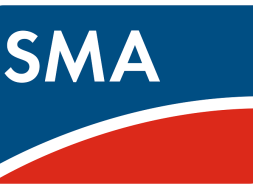
The company sees itself as well-positioned to serve the market for California’s new-home solar requirement.
Sunrun didn’t chalk up a fourth consecutive deployment record in Q1, but the largest U.S. residential solar company showed strong growth on a number of key metrics compared to last year.
- Sunrun installed 86 megawatts in the first quarter of 2019, up 27 percent from Q1 2018, beating its own guidance.
- It expects to install 102 to 104 megawatts in Q2, and to grow its deployments 16 to 18 percent for the whole of this year. That would mean as much as 440 megawatts of installations in 2019.
- Quarterly revenue rose 35 percent year over year, to $194.5 million, with especially strong growth on the third-party-ownership side of its business, encompassing leases and power-purchase agreements.
- Creation cost per watt rose to $3.46, the highest level since Q1 2018. Project value per watt rose with it, to $4.52, also the highest level since the previous Q1.
Greentech Media spoke to CEO Lynn Jurich Wednesday ahead of the San Francisco-based company’s earnings call with analysts. Among the thoughts Jurich shared:
On the phasedown of the federal investment tax credit:
The decline of the investment tax credit puts pressure on solar installers to streamline operations. A general rule of thumb would be to raise project value 2 percent and reduce costs by 4 percent annually to prepare for the drop-down of the credit from 30 percent in the coming years.
“We want to attack the equation on both of those dimensions,” Jurich said, though she declined to name exact targets for Sunrun’s ITC preparations.
On California’s mandate for solar on new homes from 2020:
“We are engaged with more than half of the top 10 builders in California, so we think that we’re well positioned for when the mandate kicks in.”
That keeps solar equipment off the homebuilder’s balance sheet, and frees up the buyer’s mortgage dollars to go towards other home upgrades, Jurich added.
On turning home batteries into money-making grid assets:
Sunrun’s BrightBox solar-plus-storage product offers customers backup power and greater control over their energy use, but it also lays the groundwork for aggregated grid services revenue.
Jurich did not disclose new BrightBox deployment numbers for Q1, but reaffirmed the guidance from last quarter that storage installations will grow more than 100 percent year over year in 2019. At the end of 2018, Sunrun had installed roughly 5,000 BrightBox systems.
Sunrun is reaching out to utilities and municipalities to discuss aggregating home energy systems into grid resources, Jurich said.
“These programs will take multiple years to get set up, but once they’re set up, they’re very scalable,” Jurich said. “Once we’re a trusted aggregator, our customers will be able to benefit from those types of programs.”
Observers got a tangible example of what this business model looks like in February, when Sunrun won a capacity contract with ISO New England. That contract obliges Sunrun to install 5,000 BrightBox systems in the region by 2022.
The analyst’s take:
Reacting to Sunrun’s Q1 numbers, Allison Mond, senior solar anlayst at Wood Mackenzie Power & Renewables, said:
“Q1 is historically the lowest volume quarter for the industry, but for Q1, it’s actually pretty strong for them. This is another quarter where Sunrun continues to solidify its lead as the top installer and financier of residential solar.”
Weather impacts from the winter months tend to keep Q1 numbers low. Though Sunrun deployed noticeably less than the 115 megawatts it delivered in Q4, it outperformed all its previous first quarters.
On Sunrun’s earnings metrics:
As we’ve covered on previous Sunrun earnings, the company’s business model makes it tricky to rely on traditional metrics of financial success.
Summing up revenue for the quarter and the cost of operations leads to a loss of $86.9 million. That translates to a net loss of $0.12 per share in Q1.
Sunrun’s leadership points out that the company recognizes the cost of installing solar systems in the present, but the revenue from those systems accrues over 20 years, well beyond the scope of any one quarter’s earnings assessment.
As such, the company points to net present value as a marker of its business performance. That metric nets out the cost of installing a system and its projected future value. In Q1, the average project generated $8,100 in net present value, or $1.06 per watt. That’s slightly lower than the average for 2018, but Sunrun raised the 2019 guidance to $1.15 per watt.
Sunrun then raises money against those long-term, contracted cash flows, and uses that to replenish its coffers.
















